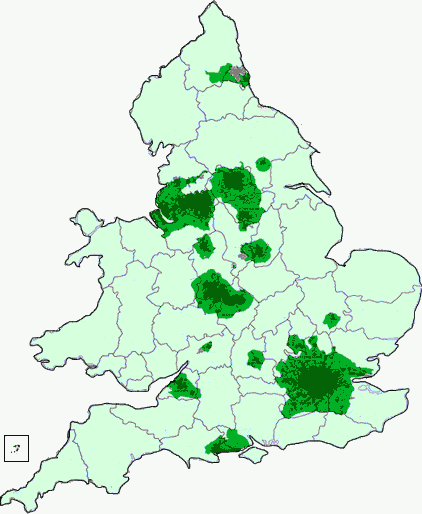Green Belt Land
The policy for green belt land is arguably the most widely recognised planning tool known by the general public, however the actual purpose of the green belt is widely misinterpreted. The quality of the landscape is not relevant to the inclusion of land within a Green Belt or to its continued protection. Rather than being a tool to protect countryside it is a regional strategic planning tool to prevent urban sprawl by keeping land permanently open.
There are 14 green belt areas covering around 12% of England yet the pressure to develop green belt land is increasing as local authorities struggle to find land to meet their designated quota of housing targets.
Investors are eyeing up green belt in specific growth areas for long-term investment in the hope that it will gain planning permission to build homes.
Countryside campaigners and NIMBY's are angered by the use of the green belt of development. What many individuals fail to recognise is that since 1997, 25,000 hectares of green belt have been created, with a further 12,000 hectares due to be announced in local authority plans.
Purposes of Green Belt Land
There are five purposes of including land in Green Belts:
- To check the unrestricted sprawl of large built-up areas
- To prevent neighbouring towns from merging into one another
- To assist in safeguarding the countryside from encroachment
- To preserve the setting and special character of historic towns
- To assist in urban regeneration, by encouraging the recycling of derelict and other urban land.
The Use of Land in Green Belts
Once Green Belts have been defined, the use of land in them has a positive role to play in fulfilling the following objectives:
- To provide opportunities for access to the open countryside for the urban population
- To provide opportunities for outdoor sport and outdoor recreation near urban areas
- To retain attractive landscapes, and enhance landscapes, near to where people live
- To improve damaged and derelict land around towns
- To secure nature conservation interest
- To retain land in agricultural, forestry and related uses.

Land in the News
Farmland values have increased by 7.4% in the last 9 months
Farmland values to rise again in 2012
Farmland prices increase by 16% in the last year
Farmland values rose by 5.4% in the first quarter of 2010
Agricultural land key part of investment plans
Why this man chose farms over funds
UK house building hits lowest since 1946
